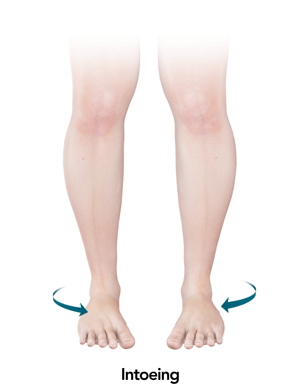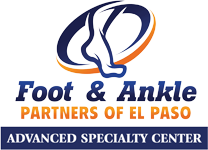
What is Intoeing?
Intoeing, also called “pigeon-toed”, is an abnormal condition characterized by the inward facing of the toe or foot instead of being straight. You may observe intoeing in your child at an early age when they start walking. Usually, intoeing corrects itself without any specific treatment as your child grows up to around 8 years of age.
Symptoms of Intoeing
Intoeing is normally painless and should not be considered an indication of arthritis. Severe intoeing may cause misstep in young children while walking or running. Children with intoeing associated with any pain and swelling should be evaluated by an orthopedic surgeon.
What are the Common Causes and Treatments for Intoeing?
Children of different age groups may have intoeing due to various reasons. The causes of intoeing depend upon the area involved in the misalignment. The most common conditions responsible for intoeing with their treatment options are:
Metatarsus adductus: This is a condition where the foot of the child may bend inward from the middle to the toes. This condition is like a clubfoot deformity. Usually, the condition naturally improves in the first 4-6 months.
Babies of 6-9 months with severe deformity should be treated with casts or specially designed shoes. In majority of cases, these simple treatment methods are helpful and surgery is rarely needed.
Tibial torsion: In tibial torsion, the lower leg (tibia) of your child is rotated inward. This abnormal rotation of the legs can occur before birth, for the baby to fit in the limited space of the womb. The alignment of the lower legs may show gradual improvement after birth, as your child grows up. Usually, tibial torsion improves without any specific treatment by school age.
Treatment options such as splints, special shoes and exercise programs are not effective for tibial torsion. Surgery is the only option and is considered only in children 8-10 years old, having substantial problems with walking.
Femoral anteversion: Femoral anteversion, also known as excessive femoral torsion, is characterized by the abnormal inward bending of the thighbone (femur). The condition is most evident in children 5-6 years of age. The abnormal twisting of the femur results in inward bending of the knees and feet while walking. Children suffering from this condition usually sit in a "W" position. The condition may improve as your child grows up.
Treatment procedures such as splints, special shoes and exercise programs are ineffective. Surgery is the only option for treating femoral anteversion and is performed only when your child is 8-10 years of age, having substantial problems even with walking. During the surgical procedure, the femur is cut to be properly aligned.
All these conditions are inherent in nature and may occur individually or in association with other orthopedic conditions. Due to genetic involvement, such conditions cannot be prevented but can be treated.
